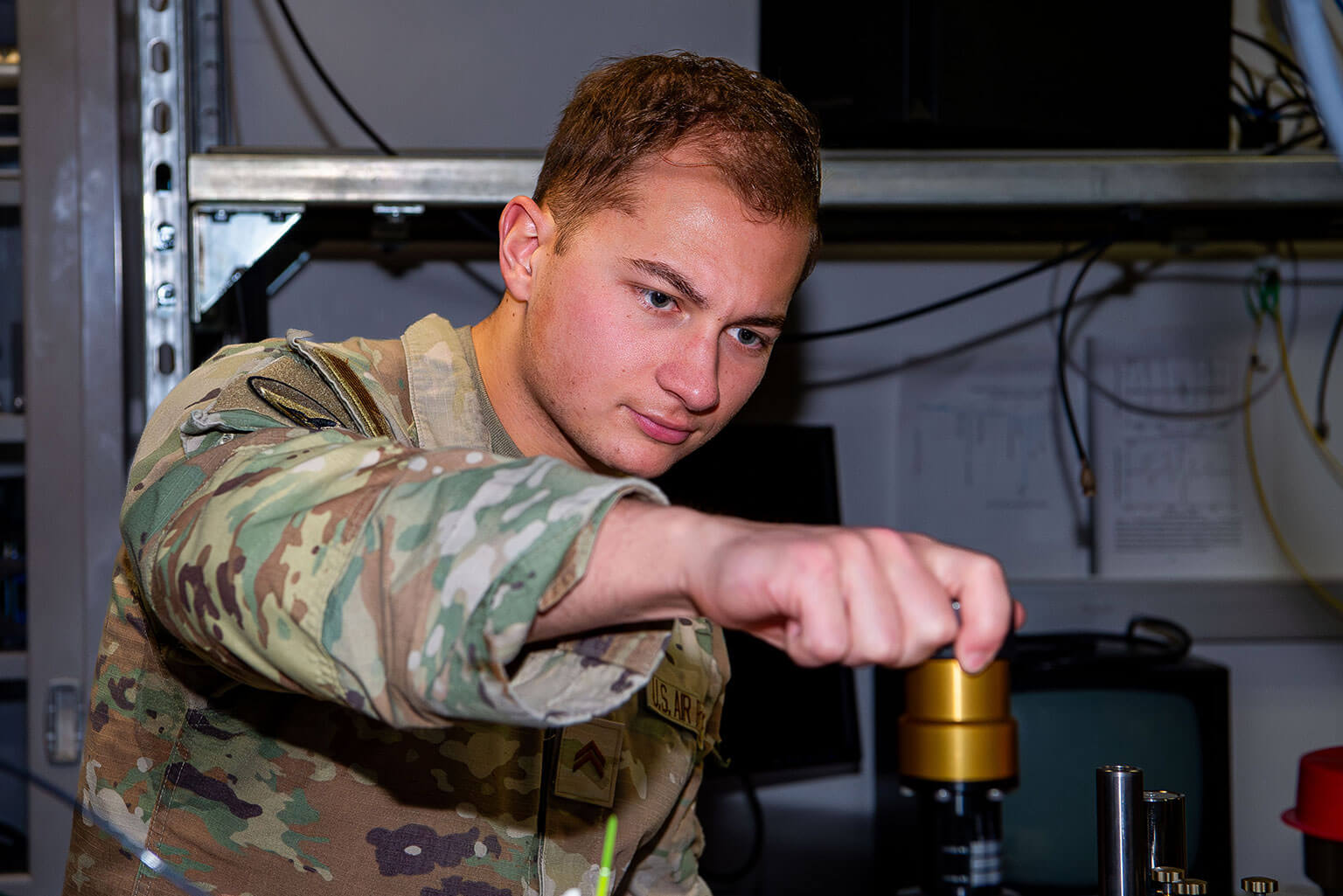Laser and optics: cadets solve problems to advance research

U.S. Air Force Academy Cadets 3rd Class Delaney Finley, left, and Annabelle Towles adjust a vacuum system that produces and traps a beam of silicon atoms in the U.S. Air Force Academy Laser and Optics Research Center, Jan. 22, 2025. The cadets’ project uses specific laser frequencies to cool and trap silicon atoms. (U.S. Air Force photo by Dylan Smith)
By Randy Roughton
U.S. Air Force Academy Strategic Communications
U.S. AIR FORCE ACADEMY, Colo. – U.S. Air Force Academy cadets are at the forefront of innovation as they solve real-world problems at the Laser and Optics Research Center. If successful, their research projects could transform current Department of Defense quantum computing methods and nuclear forensics methodologies.
Cadets 3rd Class Delaney Finley and Annabelle Towles’ research uses specific laser frequencies to cool and trap silicon atoms. Their project may allow them to assemble a smaller and more powerful quantum computer.
“A quantum computer is orders of magnitude faster than a supercomputer,” said Finley, a physics and applied mathematics major. “Machine learning would be much faster and the artificial intelligence system is more sophisticated within a quantum computer. Faster and smarter AI means we can solve bigger problems.”
Cadets pioneer quantum computing and xenon detection technologies
Cadets have worked with faculty in the LORC since its founding as one of the Academy’s three original cadet research centers in 1996. Cadet and faculty researchers conduct experiments in atomic physics, atmospheric optics, high-power lasers, nonlinear optics, optical communications and quantum optics. Professor Randall Knize has been the center’s director since the beginning.
“The Laser and Optics Research Center supports research for 15 cadets and six to eight faculty members a year,” said Professor Randall Knize, center director. “The Laser and Optics Research Center advances fundamental research and develops national security practical applications.”

U.S. Air Force Academy Cadet 2nd Class August Antaki works on his Department of Physics and Meteorology team’s project to slow and capture xenon atoms for nuclear forensics in the U.S. Air Force Academy Laser and Optics Research Center, Jan. 22, 2025. Cadets apply their classroom knowledge to real-world problems that involve atomic physics, laser systems, optical sensors and photonic technologies. (U.S. Air Force photo by Dylan Smith)
The detection of xenon for nuclear forensics
Cadets work on major projects such as atomic and nuclear physics, diode-pumped alkali lasers and the detection of xenon for nuclear forensics. Cadet 2nd Class August Antaki, a physics and astronautics major, works on a capstone research team to slow and capture xenon atoms. Xenon is a noble gas and a nuclear fission reaction byproduct. Detecting its radioactive isotopes is essential for identifying and analyzing nuclear events. Their research focuses on developing advanced laser-based techniques to detect xenon with high precision and efficiency.
“The bulk of our capstone research is the application of what we’ve learned in the classroom to real-life problems,” Antaki said. “We work through issues that come up in the lab that we don’t see in our courses. We rely on our problem-solving skills to figure out why something isn’t working the way it should.”
The physics capstone research project teams will present their findings to their classmates and to the Colorado Springs scientific community later this semester. Their work enhances understanding of atomic and nuclear physics and contributes to national security by advancing nuclear forensics methodologies.
See photos of the Laser and Optics Research Laboratory.